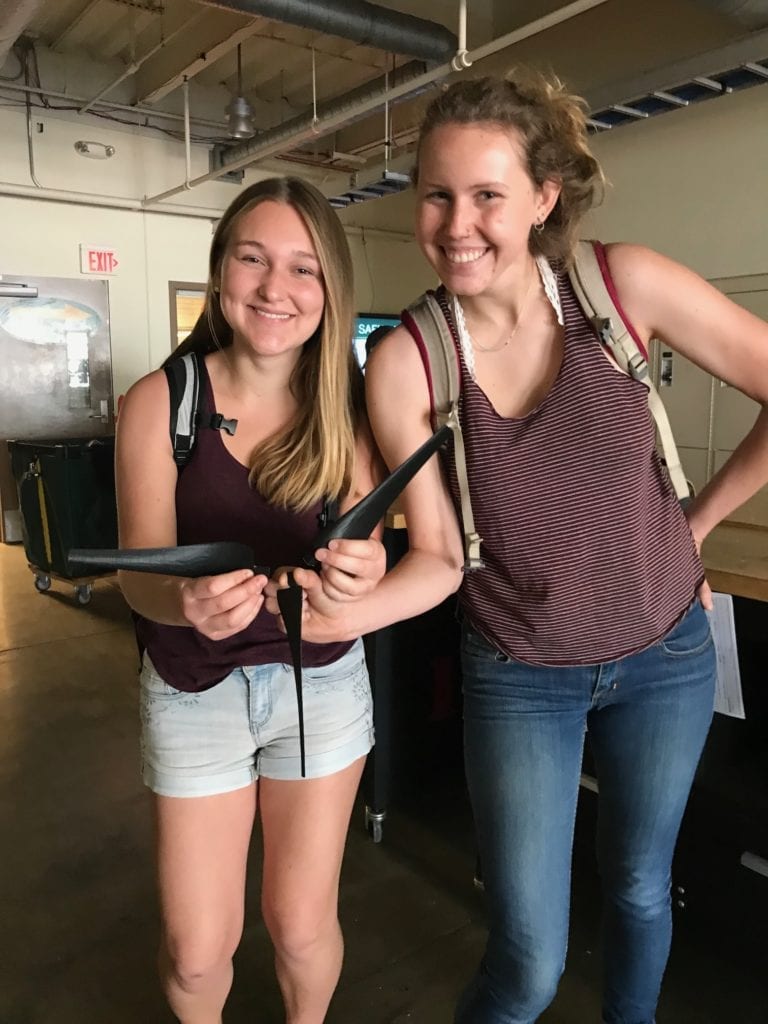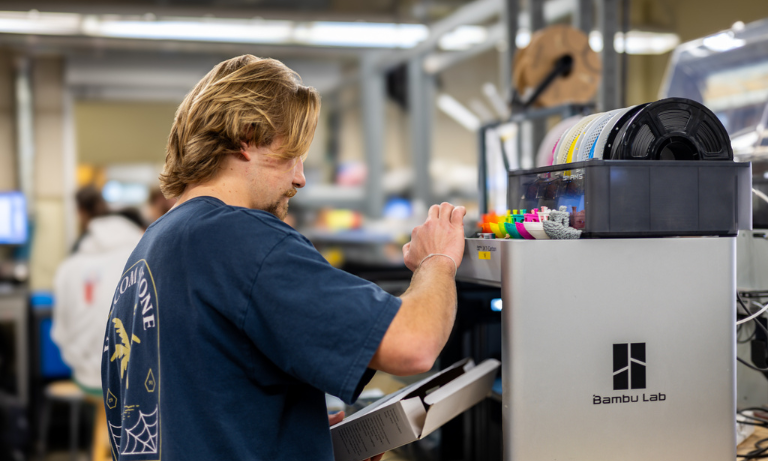A team from Cal Poly was recently invited to compete in the 2021 Collegiate Wind Competition, an event sponsored by the U.S. Department of Energy that will bring the next generation of wind energy pioneers together with today’s industry leaders.
Cal Poly is one of 13 teams invited to the competition, which challenges multidisciplinary teams to develop a project plan based on wind energy market and siting considerations, design and build a model wind turbine and test their turbine in a wind tunnel. Cal Poly’s involvement stems from the wind power club, called Wind Power Design, co-created by Jess Dent, a mechanical engineering student. Wind Power Design is an Instructionally Related Activity (IRA), which is funded through student fees to provide an out-of-class experience that provides enrichment to students and enhances their learning.
We asked Dent, who is president of the club, about Wind Power Design, the competition and the importance of wind power.
How many people will be involved in this – and from what majors?
The competition occurs for all of next academic year, with the final event in June 2021. Because of this, we don’t know who the exact team will be yet. About 10-12 students in the wind power club that will be around next year are excited for this competition, but we are also looking to recruit more members to help out with some of the other interdisciplinary aspects of the competition. The current majors involved are mechanical, electrical, aerospace, civil engineering, and natural resources & environmental management. We are hoping to get some students interested who are in construction management, business, etc.
What do you do regarding wind power during the year?
During this school year our club has been working on a few small turbine projects. We have one turbine that we have been using for prototyping, and another project that is to design a small lightweight turbine that is portable and can be used to power a small load — a light, phone charger — while camping. The third project is probably our biggest, and is being done in partnership with the local non-profit One Cool Earth and the local Laguna Middle School. In this one we are building a small (4 ft rotor diameter) wind turbine in the middle school garden, which will be used as an educational piece for the middle schoolers to learn about renewable energy. On top of this we have done some outreach with local youth teaching about wind energy. Earlier this quarter our club was also able to organize a tour of a wind and solar farm near Tehachapi, California, run by EDF Renewables, which was super awesome for all us wind energy nerds.

Why do you think wind power is so important right now?
In my mind, wind energy has always been an important issue. I’ve grown up in an age of new climate extremes, with severe droughts, storms, and wildfires affecting many parts of the world. The transition to cleaner energy sources is desperately needed, but this new energy must also be well balanced to account for differences between power production and consumption. In California we are lucky to have a great solar power resource, but this is not useful at night. Wind power is important for helping balance and “smooth out” the grid. It is also a reliable technology that has been around for decades, as well as an industry that has been growing rapidly in recent years. In many places the cost of installing a new wind farm is becoming cheaper than one that is fossil-fuel based, making it an exciting time for us as students to get involved in this growing industry.
How will the team prepare for the wind competition?
Since we’ve been building all these small turbines already the team is a step ahead in preparing for this competition. In the upcoming year we will be building, testing, and reiterating upon this process to design the best turbine we can for the competition. The competition also includes a wind farm site development and planning aspect, which the team will be working on simultaneously. For this aspect in particular we will working with a number of faculty to learn more about all the different considerations that need to be made when designing the siting plan for a wind farm. The team is lucky to have the support of over 15 faculty from all across the university who are willing to help teach us about many aspects of this type of design.


